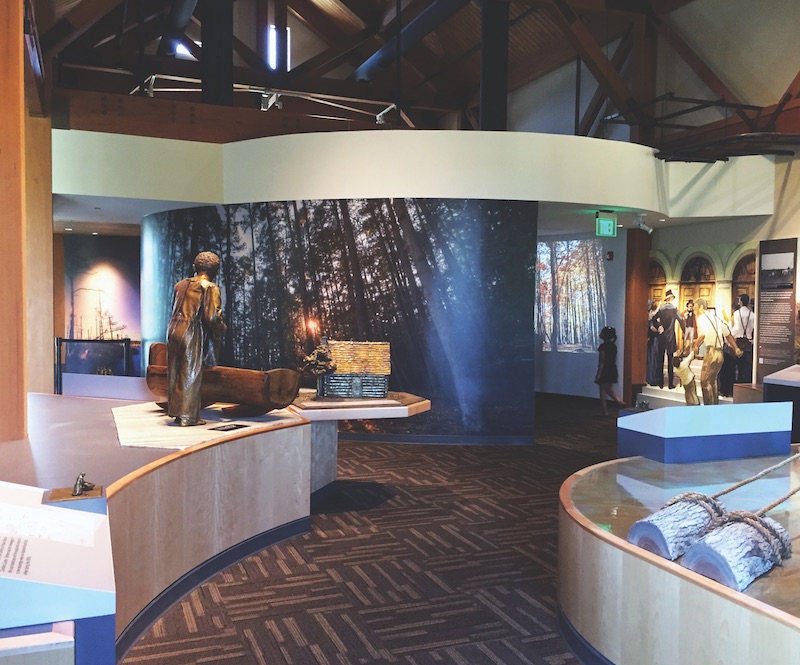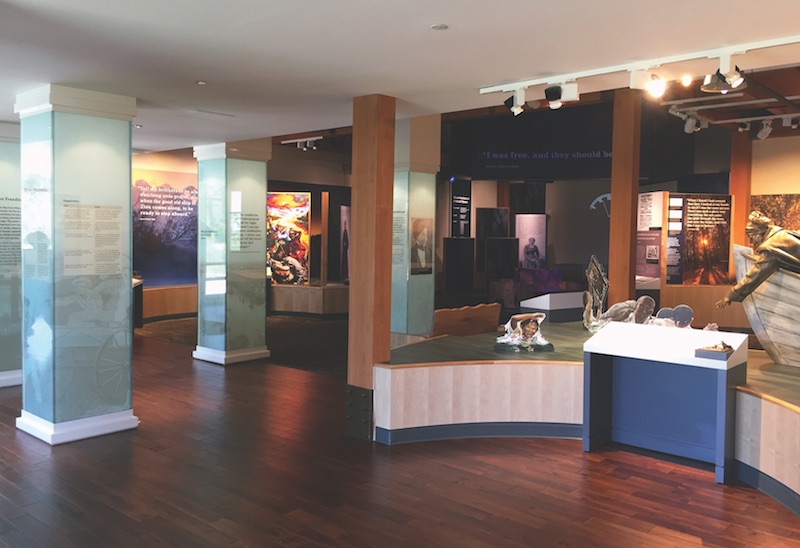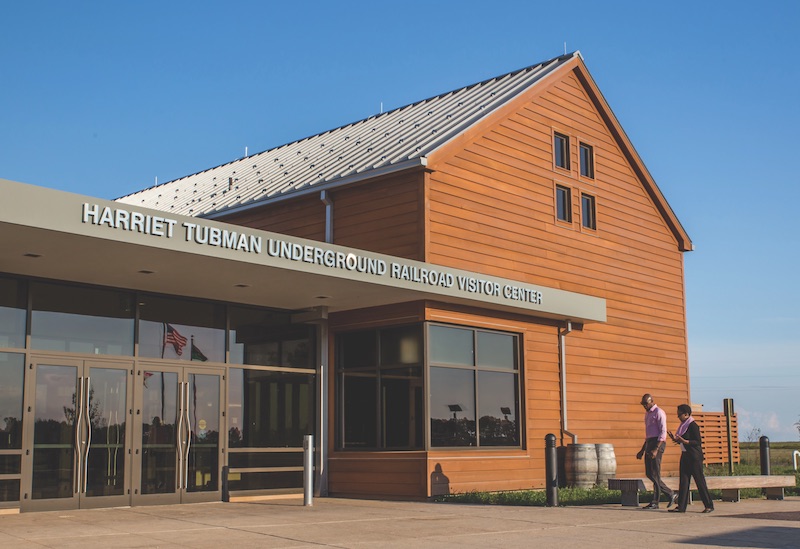The $21 million, 15,000-sf Harriet Tubman Underground Railroad Visitor Center in Church Creek, Md., uses engaging displays and exhibits to tell the story of Harriet Tubman’s life. The building’s design expresses the importance of traveling northward to escape the circumstances of slavery through an integrated site, building, and exhibit design.
The museum is conceived as a series of abstracted forms made up of two main structures, one administrative and one exhibit. The structures are joined by a shared entry plaza and terrace.
 Photo: Dorchester County Tourism.
Photo: Dorchester County Tourism.
The space between the buildings grows wider as visitors move north—a metaphor for freedom—while the view to the south is truncated by the splay of the building—meant to suggest a sense of oppression.
The design firm, GWWO Inc./Architects, used three volumes to memorialize the fates of the enslaved in the region: be sold, stay in fear of being sold, or run away. As visitors make their way north, they can take detours to other parts of the museum to discover and learn. After passing through the museum, visitors are directed toward a memorial garden that heads north before weaving through the site and returning to the beginning. This garden’s path is meant to represent Tubman’s circuitous routes and willingness to return to the region.
 Photo: Dorchester County Tourism.
Photo: Dorchester County Tourism.
A series of exhibit galleries, an orientation theater, a museum store, an information desk, a research library, offices, and support spaces are all included in the museum, which opened to the public in March.
 Photo: Dorchester County Tourism.
Photo: Dorchester County Tourism.
Related Stories
| Sep 11, 2013
BUILDINGChicago eShow Daily – Day 3 coverage
Day 3 coverage of the BUILDINGChicago/Greening the Heartland conference and expo, taking place this week at the Holiday Inn Chicago Mart Plaza.
| Sep 10, 2013
BUILDINGChicago eShow Daily – Day 2 coverage
The BD+C editorial team brings you this real-time coverage of day 2 of the BUILDINGChicago/Greening the Heartland conference and expo taking place this week at the Holiday Inn Chicago Mart Plaza.
| Aug 26, 2013
What you missed last week: Architecture billings up again; record year for hotel renovations; nation's most expensive real estate markets
BD+C's roundup of the top construction market news for the week of August 18 includes the latest architecture billings index from AIA and a BOMA study on the nation's most and least expensive commercial real estate markets.
| Aug 22, 2013
Energy-efficient glazing technology [AIA Course]
This course discuses the latest technological advances in glazing, which make possible ever more efficient enclosures with ever greater glazed area.
| Aug 21, 2013
First look: Petersen Automotive Museum's dramatic facelift
One of the world's largest automotive museums unveils plans for a stunning, sculptured metal exterior and cutting-edge interior upgrades.
| Aug 14, 2013
Green Building Report [2013 Giants 300 Report]
Building Design+Construction's rankings of the nation's largest green design and construction firms.
| Jul 29, 2013
2013 Giants 300 Report
The editors of Building Design+Construction magazine present the findings of the annual Giants 300 Report, which ranks the leading firms in the AEC industry.
| Jul 26, 2013
How biomimicry inspired the design of the San Francisco Museum at the Mint
When the city was founded in the 19th century, the San Francisco Bay’s edge and marshland area were just a few hundred feet from where the historic Old Mint building sits today. HOK's design team suggested a design idea that incorporates lessons from the local biome while creating new ways to collect and store water.
| Jul 22, 2013
Cultural Facility Report [2013 Giants 300 Report]
Building Design+Construction's rankings of design and construction firms with the most revenue from cultural facility projects, as reported in the 2013 Giants 300 Report.
| Jul 19, 2013
Reconstruction Sector Engineering Firms [2013 Giants 300 Report]
URS, STV, Wiss Janney Elstner top Building Design+Construction's 2013 ranking of the largest reconstruction engineering and engineering/architecture firms in the U.S.















